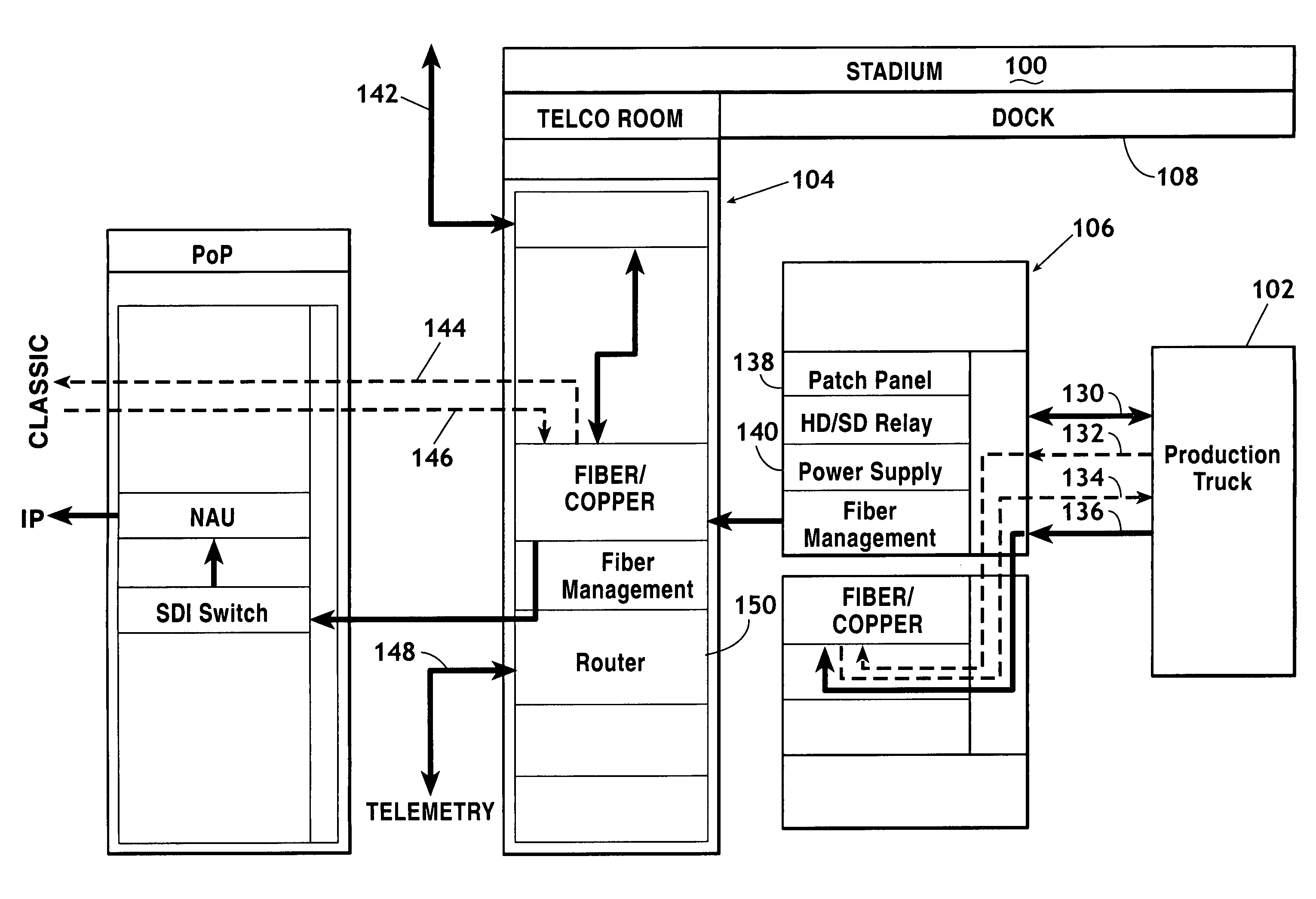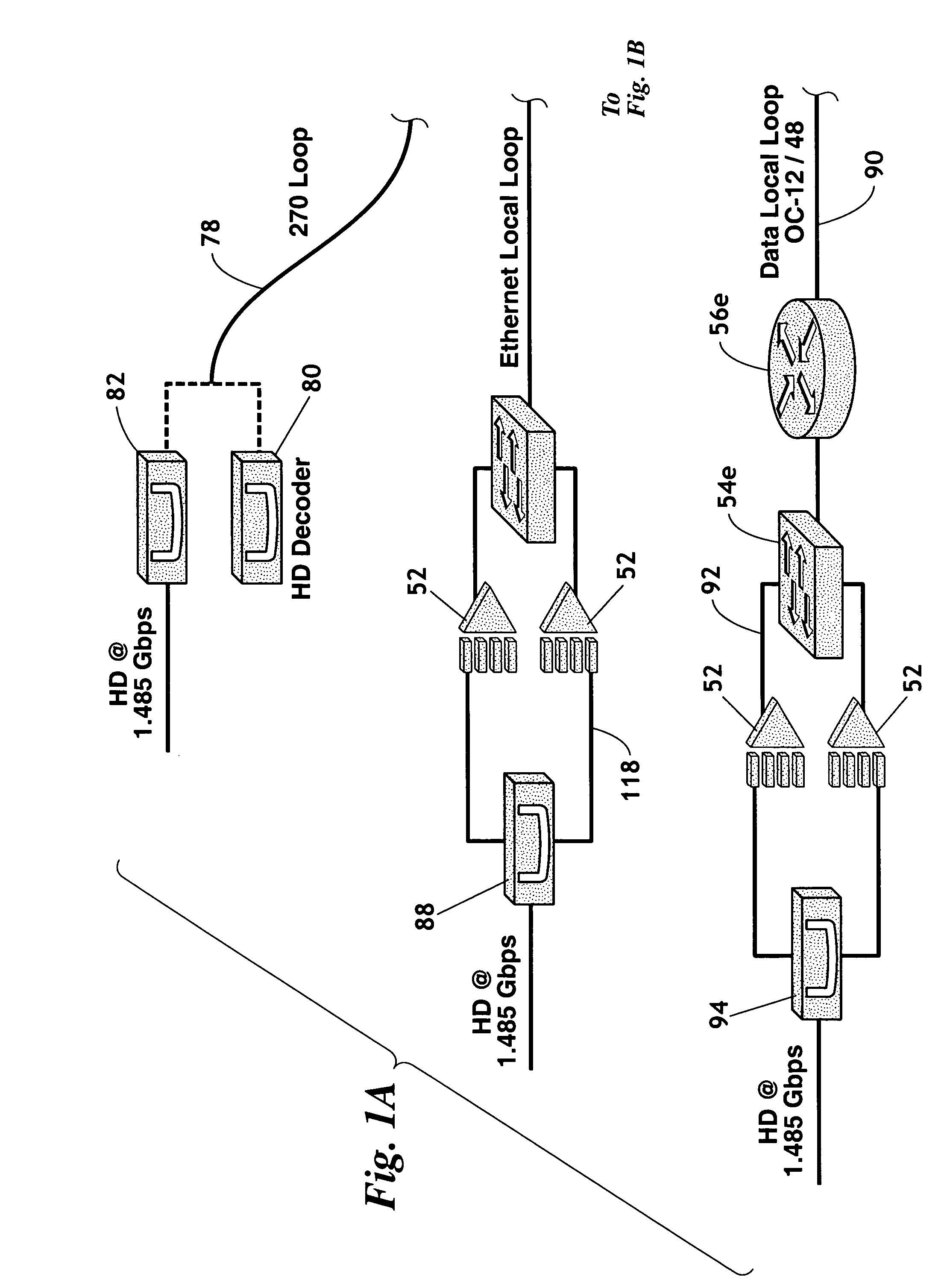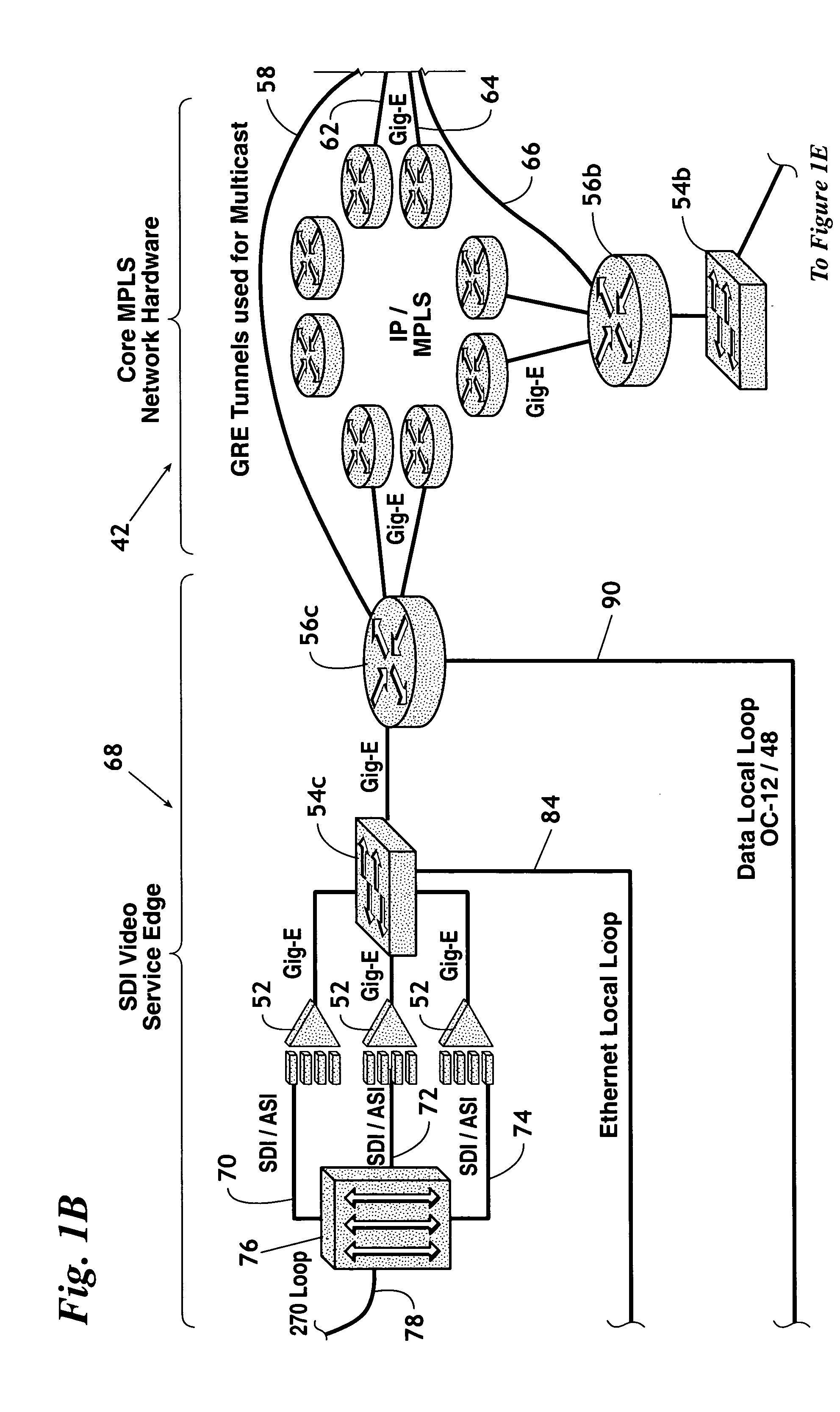Method for the transmission and distribution of digital television signals
a technology of digital television and transmission method, applied in the field of transmission and distribution of digital television, can solve the problems of substantial price disparity at the consumer, hampered quest for high-definition television, etc., and achieve the effect of facilitating point-to-multipoint distribution and reducing the number of duplicate dedicated network assets
- Summary
- Abstract
- Description
- Claims
- Application Information
AI Technical Summary
Benefits of technology
Problems solved by technology
Method used
Image
Examples
Embodiment Construction
[0030]Before explaining the present invention in detail, it is important to understand that the invention is not limited in its application to the details of the construction illustrated and the steps described herein. The invention is capable of other embodiments and of being practiced or carried out in a variety of ways. It is to be understood that the phraseology and terminology employed herein is for the purpose of description and not of limitation.
[0031]As will become apparent on reading the description of the preferred embodiments, while the inventive system is not limited to a single network architecture, in the preferred embodiments DTV information is transmitted, at least in part, over a multiprotocol label switching (“MPLS”) network. Such networks are well known in the art and, with the exception of specialty label ingress nodes and label egress nodes, as discussed further hereinbelow, the MPLS network of the present invention is conventional in nature.
[0032]In a MPLS netw...
PUM
 Login to View More
Login to View More Abstract
Description
Claims
Application Information
 Login to View More
Login to View More - R&D
- Intellectual Property
- Life Sciences
- Materials
- Tech Scout
- Unparalleled Data Quality
- Higher Quality Content
- 60% Fewer Hallucinations
Browse by: Latest US Patents, China's latest patents, Technical Efficacy Thesaurus, Application Domain, Technology Topic, Popular Technical Reports.
© 2025 PatSnap. All rights reserved.Legal|Privacy policy|Modern Slavery Act Transparency Statement|Sitemap|About US| Contact US: help@patsnap.com



